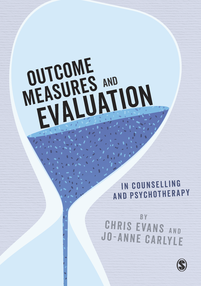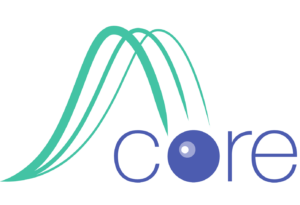This post is available in: English, there may also be a subsite in your language, see "Subsites" in the top menu.
As noted elsewhere, the CORE-SF/A, with the CORE-SF/B, were the only short forms alongside the CORE-OM in the suite of instruments at the launch of the system in 1998. At that time we recognised that practitioners working with children and adolescents would not find those measures appropriate for their clientèle except at the upper end of the teen age range and hoped to produce a measure usable down to about twelve years of age.
Change over ages
We have always recognised that there is no precise age below which self-report measures become unreliable. Similarly, there is no definite age in the teens when adult measures become more appropriate than ones specially designed for teens. In fact we feel sure that there is great individual variation in appropriateness, so what is best for one 18 year old may not be best for another and what is usable for one 11 year old may not be usable for another. We need much more empirical exploration of these issues. See FAQ and background document for a bit more on this and there will be more when Emily’s first YP-CORE paper comes out, see below and sign up to the CORE Email list to know when that does come out.
Scoring
The quick method if all items were completed is as for the CORE-10: add together the item scores to get the “Clinical Score”. We recommend pro-rating if only one item has been omitted but not if more have been omitted. Pro-rating means you add together the item scores, then divide by the number of questions completed, i.e. 9, to get the mean score, then multiply by 10 to get the Clinical Score. As that gets you numbers like 5.333333333… , or 7.55555… it really only makes sense to quote to one decimal place: 5.3 and 7.6.
Development of the YP-CORE
As with the development of the adult oriented instruments, there was great support for a measure for young people from the practitioner group. An early attempt, “teen-CORE” was abandoned when it became clear that more substantial changes from the CORE-OM template were needed and, after a lot of work by many people, with particular input from Professor Mick Cooper, the 10 item YP-CORE was the result. All the items map from CORE-OM items but almost all have been reworded to improve fit to the age group (and the selection of items was obviously tuned by work with practitioners and clients to the age group). There are no domain scores and prorating of up to one missing item is appropriate.
Reference
The canonical reference to the YP-CORE, with some initial psychometric exploration in UK clinical and non-clinical samples using the English version is:
Twigg, E., Barkham, M., Bewick, B. M., Mulhern, B., Connell, J., & Cooper, M. (2010). The Young Person’s CORE: Development of a brief outcome measure for young people. Counselling and Psychotherapy Research: Linking Research with Practice, 9, 160 – 168. http://doi.org/10.1080/14733140902979722.
A much more detailed paper on the English YP-CORE based on significantly larger samples has since been published:
Twigg, Elspeth, Mick Cooper, Chris Evans, Elizabeth S. Freire, John Mellor-Clark, Barry McInnes, and Michael Barkham. 2016. ‘Acceptability, Reliability, Referential Distributions, and Sensitivity to Change of the YP-CORE Outcome Measure: Replication and Refinement’. Child and Adolescent Mental Health 21 (2): 115–23. doi:10.1111/camh.12128.
This showed that the psychometric properties alter by both age and gender. The differences are not huge but they are entirely congruent with the huge changes, many of them gender related, going on in adolescence. They are also of sufficient magnitude to need different Jacobson & Truax type “Clinically Significant Change” cutting points for 11-13 and 14-16 year olds, and different ones for the males and females. As I’m a co-author on that paper and did the analyses, I think I can send a copy to anyone who wants one for their own personal use so contact me (CE) asking for a copy or with any other questions or comments about the YP-CORE.
Emily Blackshaw’s PhD
Working with myself, Prof. Mick Cooper and Dr. Gina Pauli in the University of Roehampton’s CREST research unit, Emily did her PhD around the YP-CORE and she created a ResearchGate project page for this but RG are “retiring” all their projects as of 31.iii.23 so I have moved the project as a useful, partly historical but still useful collection to YP-CORE: Psychometric properties and utility (that was the name of the project on RG). Emily’s log is particularly good. Emily has moved on to a pressurised new post which, with my overload, has handicapped turning her huge body of work into papers but the first should be submitted by mid 2023.
Paying attention to live events and stressors impinging during therapies
Emily and I are particularly interested in the psychometrics of the YP-CORE (and other measures) when they are used frequently, as is now often the with the current enthusiasm for measures to be completed weekly during therapy. One thing that concerned us is that intercurrent events and stressors are usually simply rolled into the “noise”/”error” component when change is modelled and that seems simply wrong. So we are looking into this and that resulted in a paper:
Blackshaw, E., Evans, C., & Cooper, M. (2018). When life gets in the way: Systematic review of life events, socioeconomic deprivation, and their impact on counselling and psychotherapy with children and adolescents. Counselling and Psychotherapy Research, 18(2), 143–153. https://doi.org/10.1002/capr.12156
Sadly that’s not open source but do contact me and ask if you would like a copy.
Downloads
Download the English language PDF of the YP-CORE, for other languages, read on further below.
Depending on your web browser, clicking on that will either open it, in which case you should be able to save it from there, or will offer to download it for you (or it may just download it to its default download location). Downloading means you accept the licence on the measure, see copyright and licensing information.
Translations of the YP-CORE
Good authorised translations to our translation procedure have been completed for the YP-CORE: see here.
Created for original site 1/1/2015, last updated 5/3/23. Page author CE, licence: Attribution 4.0 International (CC BY 4.0) .
Content checker target (not for humans!): pW6QTTHWk@UHY


